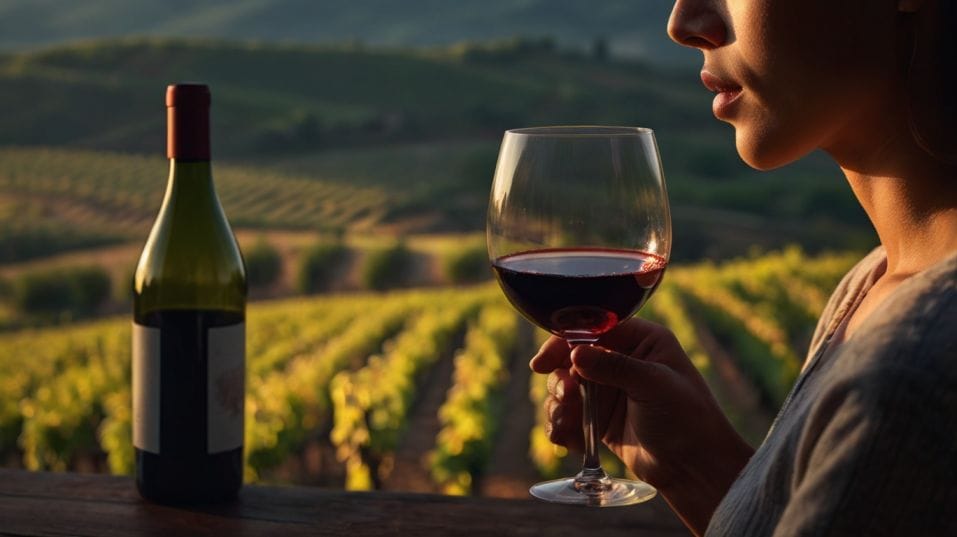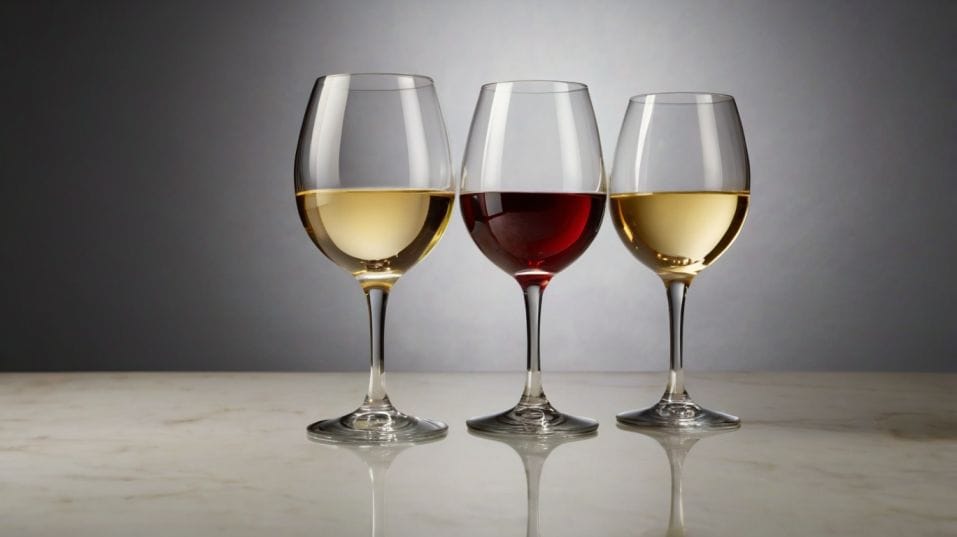What Dry, Sweet, and Off-Dry Really Mean
Crack the code on dry, sweet, and off-dry wines. Learn to taste with clarity, shop smart, and unlock real confidence in every sip.

Ever wondered why one wine feels crisp and clean while another seems smooth or even sweet—yet both are labeled “dry”? If you're just starting to decode wine, understanding terms like dry, sweet, and off-dry is a total game-changer.
These aren’t just fancy labels—they shape how wine tastes, feels, and finishes. Once you get this, you won’t just drink wine. You’ll start to read it—and finally order with confidence.
What “Dry” Really Means
In the world of wine, dry has one technical definition: a wine with no perceptible residual sugar. That’s it.
During fermentation, yeast consumes the natural sugar in grape juice and converts it into alcohol. If the winemaker allows fermentation to go to completion—meaning no sugar is left behind—the wine is considered dry.
Why Dry Doesn’t Mean Sharp or Bitter
Simple, right? But in practice, the confusion usually comes from this: dry isn’t a flavor. It’s a structural quality.
Many people say they don’t like dry wines when what they really mean is they don’t like bitter tannins, high acidity, or lack of fruitiness. These elements can make a wine feel austere or sharp, but none of them have anything to do with sugar.
To make matters more complicated, some dry wines taste fruity, even sweet-leaning, because of ripe grapes, warm climates, or certain winemaking techniques.
A rich California Chardonnay or a bold Argentine Malbec might be bone-dry in terms of sugar, but still taste soft, round, and full of plush fruit notes.
That sensory sweetness—ripe peach, dark plum, honeyed fig—can trick your brain, especially when you’re still building your reference points.
The Key Skill: Separate Flavor from Sweetness
The solution? Start separating sweet flavors from actual sweetness. A wine can be juicy and generous while still being structurally dry.
And once you can feel the difference between a wine that’s sweet and one that just tastes ripe or creamy, you’ll be in a whole new league as a taster.

The Power and Precision of Sweet Wines
Sweet wine is often misunderstood—and unfairly dismissed. For many wine beginners, “sweet” means “unsophisticated,” or worse, “cheap.” That couldn’t be further from the truth.
In reality, many of the most respected and meticulously crafted wines in the world are sweet: Tokaji, Sauternes, Eiswein, late-harvest Rieslings.
These wines aren’t sugary afterthoughts—they’re the result of skilled winemaking, specialized growing conditions, and careful balance between sugar, acid, and aroma.
What Makes a Great Sweet Wine Work
A truly great sweet wine is never sticky or one-note. Instead, it’s a layered, vibrant experience.
The residual sugar might be obvious, but it’s almost always balanced by zippy acidity, textural complexity, or intense aromatics. When a sweet wine is in balance, the sugar doesn’t dominate—it enhances.
What Sweet Wines Teach You About Structure
And here’s where sweet wines become incredibly useful for learning. They exaggerate structure in a way that helps you train your palate. You can clearly taste the interplay between sugar and acid.
You can feel the weight on your tongue and notice how it lingers. These wines teach you to identify balance, and once you start paying attention, you’ll begin to detect subtler versions of these dynamics in drier styles too.
So if you’ve written off sweet wine entirely, it’s time to revisit—with intention. Taste slowly. Feel the weight, the finish, the complexity.
Ask yourself what the sugar is doing, not just whether it’s present. That shift in mindset can open a whole new category of wine appreciation.
Exploring the Middle: What Off-Dry Actually Feels Like
If dry and sweet are two ends of a spectrum, off-dry is the broad and sometimes blurry middle. Off-dry wines contain a small amount of residual sugar—usually just enough to soften edges or amplify aromatics without tasting obviously sweet.
Why Off-Dry Wines Are So Versatile
This is where things get nuanced, and also where the most valuable learning happens.
A well-made off-dry wine walks a tightrope. It’s just sweet enough to smooth out sharp acidity or support bold flavors, but not so sweet that it distracts or weighs down the palate.
This makes off-dry wines extremely versatile, especially with food. They’re go-to choices for spicy dishes (think Thai curry or Sichuan noodles), strong cheeses, or foods with complex seasoning.
How to Train Your Palate on Off-Dry Styles
But not all off-dry wines are created equal. A Riesling with 1.5% residual sugar will taste very different from a Gewürztraminer with the same level.
The grape, the acid structure, the alcohol content, and even the serving temperature can all shift the perception of sweetness. This is where developing your tasting awareness becomes essential.
When you're tasting off-dry wines, focus on how they finish. Does the sugar linger, or does the acid cut through it? Do you feel a crisp lift at the end, or a soft, round coating on your tongue?
These clues help you read between the lines of a label—and build an intuitive sense for the kinds of wines you’ll enjoy in the moment. It’s not about memorizing percentages. It’s about recognizing balance.
How to Start Using This Knowledge in Real Life
So now that you know what these terms actually mean, how do you use that knowledge?
Start by getting curious about the structure of the wines you’re already drinking. Don’t just ask, “Do I like this?” Ask, “Is this wine dry or off-dry?” “Where is the sweetness coming from—actual sugar or fruit expression?”
“How does the acidity or alcohol affect the sweetness?” Over time, you’ll build a kind of taste map that you can rely on when reading labels or scanning a wine list.
Real-World Tips for Practicing
Another tip: don’t rely on your first sip. The first taste of any wine is often the least reliable—your palate is adjusting.
Swirl, sip again, and pay attention to how the wine develops in the mid-palate and finish. Sweetness often reveals itself more clearly after the second or third taste.
And if you really want to deepen your palate, start tasting side by side. Pick a dry Riesling and an off-dry Riesling from the same producer.
Pour a glass of dry rosé next to a lightly sweet white Zinfandel. You’ll learn more from five minutes of direct comparison than hours of reading.
Final Thoughts: Taste More. Understand Better.
Learning the difference between dry, sweet, and off-dry isn’t just about semantics—it’s about building precision. And precision leads to confidence.
When you can describe what you like in clear, structural terms, you stop relying on vague adjectives or marketing blurbs. You become a better taster, a smarter shopper, and a more engaged drinker.
So what should you do next? Try something just outside your usual zone. If you usually drink dry whites, explore an off-dry Chenin Blanc.
If you’ve avoided sweet wines, find a balanced Moscato d’Asti or late-harvest Riesling and taste it slowly, deliberately.
Wine is supposed to be a journey. The more you taste, the more you notice. And the more you notice, the more satisfying every glass becomes. Start with sugar. The rest will follow.




